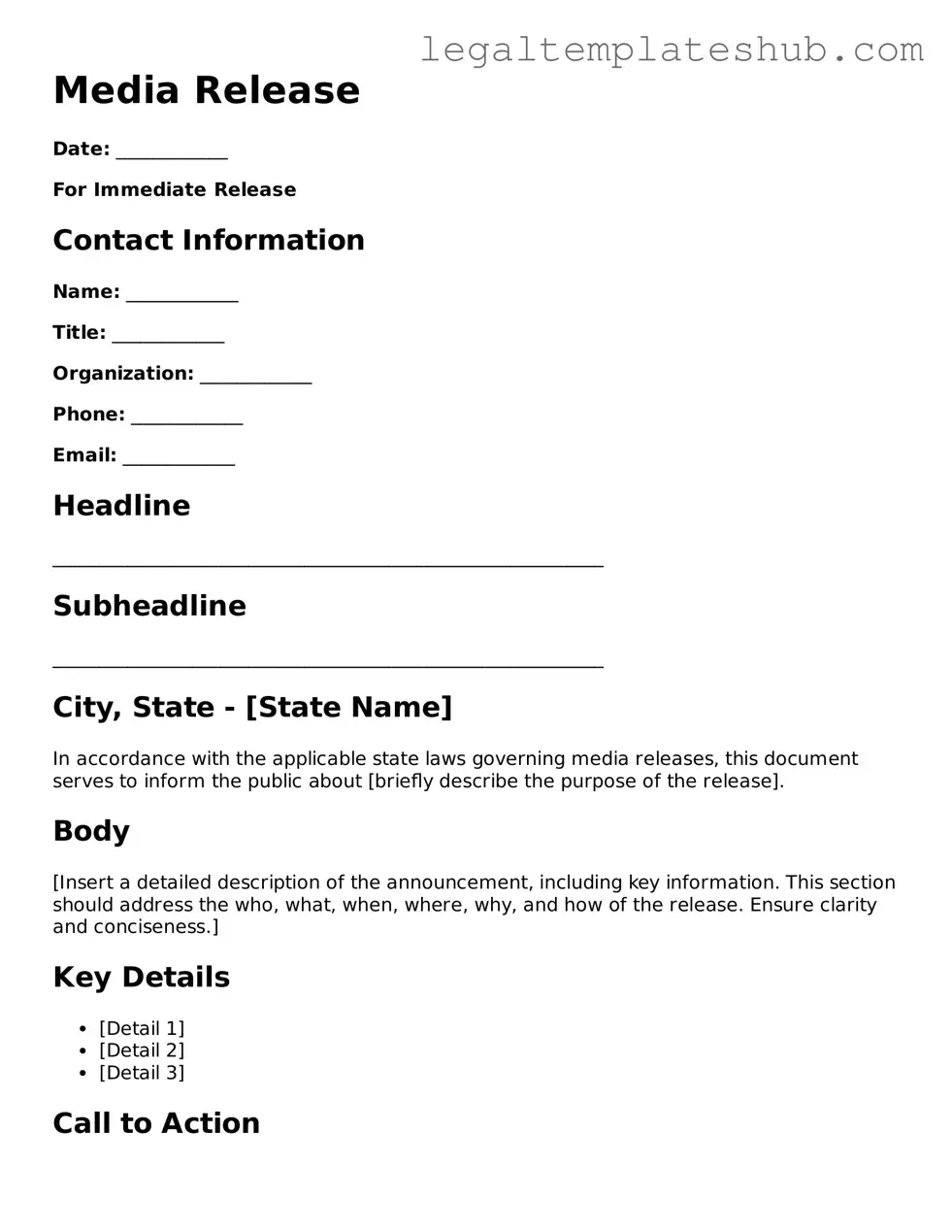Printable Media Release Template
A Media Release form is a legal document that grants permission for the use of an individual's image, likeness, or personal information in various media formats. This form is essential for protecting both the rights of the individual and the interests of the media organization. To ensure your rights are safeguarded, consider filling out the form by clicking the button below.
Access Editor
